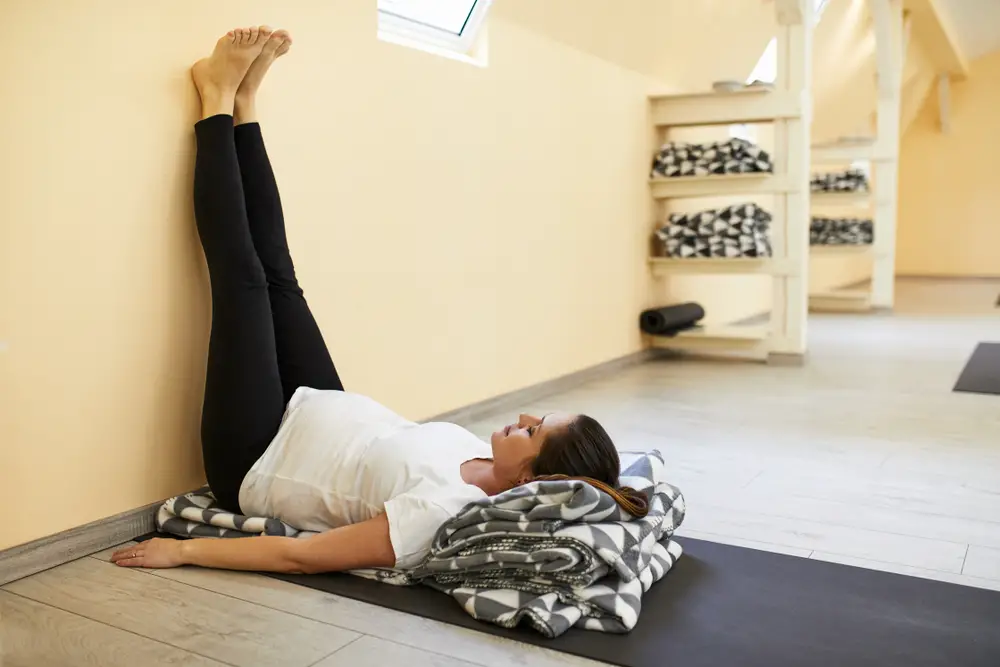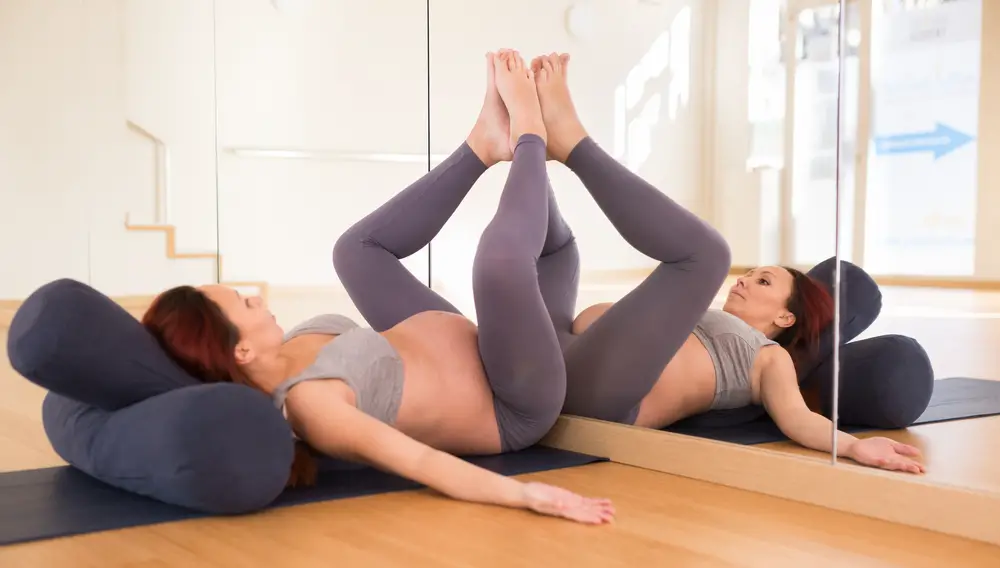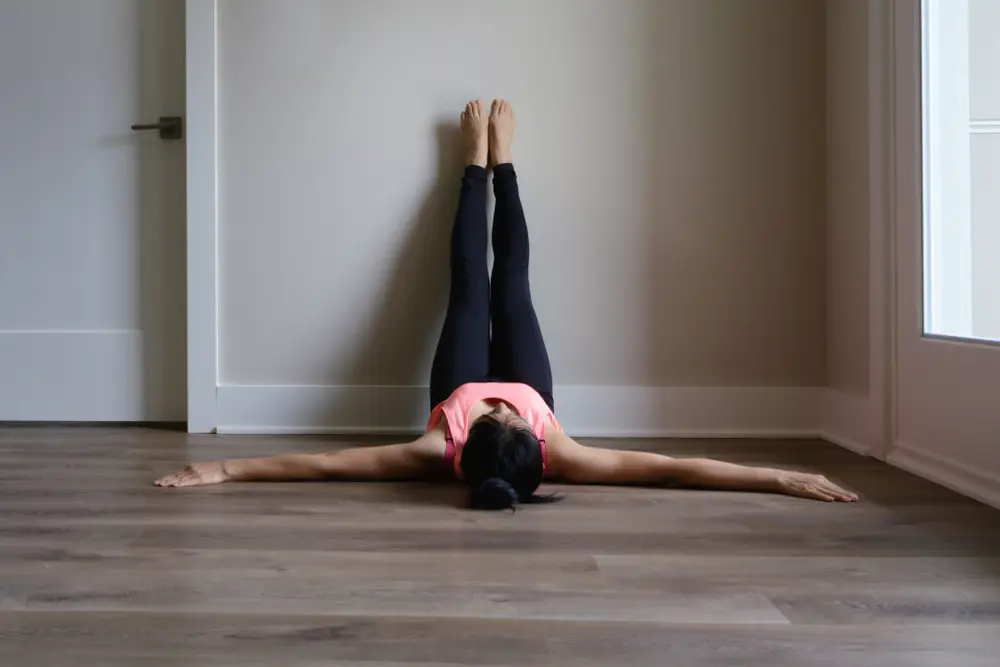Did you know that a simple yoga pose involving placing your legs up against a wall can have profound effects on your overall well-being? Enter Viparita Karani, also known as the Legs Up the Wall pose. This unassuming yet powerful posture has gained popularity among various individuals, from athletes and dancers to stressed office workers, thanks to its remarkable ability to relieve pain, reduce anxiety, and induce deep relaxation.
In a world where stress and physical ailments are rampant, it is crucial to find accessible and effective practices to support our health. Viparita Karani offers a simple and accessible solution that can be performed in the comfort of your own home.
In this comprehensive guide, we will explore the various variations of Viparita Karani, delve into the scientific studies supporting its benefits, and provide precautionary measures for safe practice.
Variations of Viparita Karani
Viparita Karani can be performed in different ways, allowing individuals to adapt the pose to their own abilities and needs. Whether you are a beginner or an experienced practitioner, there is a variation of this pose that can suit you. Let’s explore the different options:

1. Legs Straight Up the Wall Version
The simplest form of Viparita Karani involves lying on your back with your buttocks right up against the wall, or as close to it as is comfortable for you. Your legs should be extended straight up the wall, hip-distance apart. You can use a pillow to support your buttocks, especially if you are pregnant.
Keep the soles of your feet facing upward towards the ceiling, avoiding pointing your toes. Your arms can lie beside you for balance or be folded across your chest.
The position of your legs will depend on the flexibility of your hips and hamstrings, but ideally, they should touch the wall all the way up and be completely straight. It may take time and practice to achieve this level of flexibility.

2. Soles Together Version
For a deeper stretch in the groin area, you can adopt the same position as the previous variation but instead of keeping your feet hip-distance apart, bring the soles of your feet together. Your legs should still be pressed against the wall.
This variation can provide an intense stretch for your groin muscles, so proceed slowly and mindfully. Remember, the pose should never cause pain or feel like a struggle. If it does, you are not yet ready for this variation.

3. Advanced Version
The advanced version of Viparita Karani requires more balance and mobility. If you find the previous variations challenging enough, it is perfectly fine to stay with them. However, if you feel ready for more, you can explore the advanced version.
In the advanced variation, you can use props such as bolsters or blankets to elevate your hips and support the lower back, allowing for a more profound inversion. With the hips elevated, the legs can be extended vertically against a wall while the upper body remains grounded on the floor.
It is essential to listen to your body and not force yourself into a pose that causes discomfort or pain. If you experience any discomfort during the transition from the simpler variations to the advanced one, return to a variation that feels comfortable and safe for you.

Benefits of Viparita Karani
Now that we have explored the different variations of Viparita Karani, let’s dive into the incredible benefits that this pose can offer. Supported by scientific studies, these benefits encompass physical, mental, and emotional aspects of well-being.
- Increases Blood Flow and Decreases Inflammation
Viparita Karani is a powerful tool to enhance blood circulation throughout your body, especially after long periods of sitting or standing. It helps prevent blood from pooling in your feet, ankles, and legs, reducing swelling and inflammation.
Scientific studies have shown that regular practice of Viparita Karani can significantly improve blood flow and decrease inflammation. [1,2]
- Improves Hamstring Mobility and Reduces Lower Back Pain
Sitting at a desk for extended periods can lead to shortened hamstrings and subsequent lower back pain. Viparita Karani provides a gentle stretch for your hamstrings, gradually elongating them and alleviating the pressure on your lower back.
Studies have indicated that this pose improves hamstring mobility and reduces lower back pain. [3,4]
- Reduces Stress and Stimulates Relaxation
One of the most remarkable benefits of Viparita Karani is its ability to reduce stress and induce a state of relaxation. By activating the parasympathetic nervous system, this pose helps transition your body from the “fight or flight” mode, commonly experienced due to the stresses of work and daily life, to a state of calmness. Moreover, practicing Viparita Karani can contribute to better sleep quality. [5,6,7]
Preventive Measures
While Viparita Karani is generally safe for most individuals, it is essential to consider certain precautions and be aware of potential contraindications. Here are some preventive measures and ways to identify problems or symptoms:
- Consult with a healthcare professional or certified yoga instructor before attempting Viparita Karani, especially if you have any pre-existing medical conditions or injuries.
- If you experience pain or discomfort during the pose, immediately discontinue and consult a healthcare professional or instructor.
- Consider adding Adrenal Support to your daily regimen to help manage your stress levels
- Individuals with serious back and neck problems should avoid Viparita Karani unless under the guidance of a physiotherapist or certified instructor.
- This pose should be avoided during menstruation.
- People with serious eye conditions such as glaucoma should refrain from practicing Viparita Karani.
- Download a copy of my FREE 50 page step by step guide for transforming your life.
It is important to listen to your body and adjust the pose according to your comfort level. If you have any concerns or doubts, seek guidance from a qualified professional.

My Personal RX
- Start slowly: Begin with the simplest version of Viparita Karani and gradually work your way towards more advanced variations. Allow your body to adapt and progress at its own pace.
- Modify as needed: Use props such as pillows or blankets for added support and comfort. These modifications can help individuals with limited flexibility or specific physical conditions.
- Be aware of your body: Pay attention to any discomfort or pain during the pose. If you experience any adverse effects, stop immediately and seek appropriate guidance.
- Try taking my Complete Turmeric to alleviate symptoms associated with chronic inflammation.
- Download my free step-by-step protocol guide toward living a healthier lifestyle.
Viparita Karani, or Legs up the Wall pose, offers a multitude of benefits for your mind and body. By incorporating this simple yet powerful pose into your daily routine, you can enhance blood flow, reduce inflammation, alleviate lower back pain, and induce a state of deep relaxation. Remember to listen to your body, adjust the pose to your comfort level, and consult with healthcare professionals or certified instructors when necessary.

References:
- Djalilova, D. M., Schulz, P. S., Berger, A. M., Case, A. J., Kupzyk, K. A., & Ross, A. C. (2019). Impact of Yoga on Inflammatory Biomarkers: A Systematic Review. Biological research for nursing, 21(2), 198–209. https://doi.org/10.1177/1099800418820162
- Mishra, S. P., & Singh, R. H. (1984). Effect of certain yogic asanas on the pelvic congestion and it’s anatomy. Ancient science of life, 4(2), 127–128. https://www.ncbi.nlm.nih.gov/pmc/articles/PMC3331493/
- Grabara, M., & Szopa, J. (2015). Effects of hatha yoga exercises on spine flexibility in women over 50 years old. Journal of physical therapy science, 27(2), 361–365. https://doi.org/10.1589/jpts.27.361
- Schmid, A. A., Van Puymbroeck, M., & Koceja, D. M. (2010). Effect of a 12-week yoga intervention on fear of falling and balance in older adults: a pilot study. Archives of physical medicine and rehabilitation, 91(4), 576–583. https://doi.org/10.1016/j.apmr.2009.12.018
- Büssing, A., Michalsen, A., Khalsa, S. B., Telles, S., & Sherman, K. J. (2012). Effects of yoga on mental and physical health: a short summary of reviews. Evidence-based complementary and alternative medicine : eCAM, 2012, 165410. https://doi.org/10.1155/2012/165410
- Shohani, M., Badfar, G., Nasirkandy, M. P., Kaikhavani, S., Rahmati, S., Modmeli, Y., Soleymani, A., & Azami, M. (2018). The Effect of Yoga on Stress, Anxiety, and Depression in Women. International journal of preventive medicine, 9, 21. https://doi.org/10.4103/ijpvm.IJPVM_242_16
- Kiecolt-Glaser, J. K., Christian, L., Preston, H., Houts, C. R., Malarkey, W. B., Emery, C. F., & Glaser, R. (2010). Stress, inflammation, and yoga practice. Psychosomatic medicine, 72(2), 113–121. https://doi.org/10.1097/PSY.0b013e3181cb9377




















